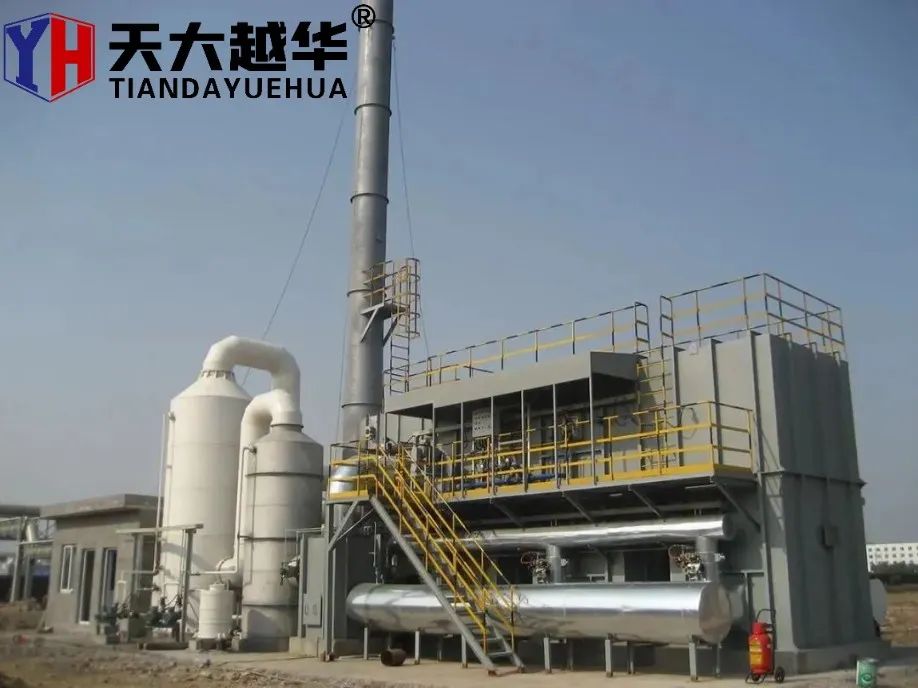Designing for Efficiency: How Oxidizer Incinerator RTOs Minimize Emissions and Maximize Efficiency
2024-04-08
In the ongoing battle against industrial emissions and air pollution, Oxidizer Incinerator Regenerative Thermal Oxidizers (RTOs) stand as powerful allies, employing advanced design principles to neutralize harmful pollutants and maximize operational efficiency. From innovative heat recovery systems to precise combustion control mechanisms, the design of Oxidizer Incinerator RTOs plays a pivotal role in minimizing emissions and optimizing performance. In this blog, we'll delve into the key design features that enable RTOs to achieve these objectives while upholding environmental stewardship.
1. Thermal Oxidation Chamber Design
At the heart of every Oxidizer Incinerator RTO lies the thermal oxidation chamber, where volatile organic compounds (VOCs) and hazardous air pollutants (HAPs) are subjected to high temperatures to facilitate combustion. The design of the oxidation chamber is optimized to ensure efficient mixing of air and pollutants, maximizing contact between them and promoting complete oxidation. By providing sufficient residence time and turbulence within the chamber, RTOs ensure thorough destruction of pollutants while minimizing the formation of harmful byproducts.
2. Regenerative Heat Exchange System
One of the hallmarks of Oxidizer Incinerator RTOs is their regenerative heat exchange system, which plays a dual role in minimizing emissions and maximizing efficiency. During operation, hot exhaust gases pass through ceramic heat exchange media, transferring heat to the media and raising its temperature. The heated media then releases stored heat to the incoming process air during the next cycle, preheating it before it enters the combustion chamber. This energy recovery mechanism minimizes fuel consumption, reduces emissions, and enhances overall thermal efficiency.
3. Advanced Combustion Control
Precise control of combustion parameters is essential for optimizing the performance of Oxidizer Incinerator RTOs and minimizing emissions. Advanced control algorithms and instrumentation systems regulate parameters such as temperature, airflow, pressure, and fuel-to-air ratio with precision, ensuring optimal combustion efficiency. By continuously monitoring and adjusting combustion parameters in real time, RTOs maintain high destruction efficiency rates while minimizing energy consumption and emissions of harmful pollutants.
4. Low NOx Burners
To further minimize emissions of nitrogen oxides (NOx), Oxidizer Incinerator RTOs are equipped with low NOx burners that reduce the formation of NOx during combustion. These burners employ advanced combustion techniques such as staged combustion, flue gas recirculation, and selective catalytic reduction to minimize NOx emissions while maintaining high combustion efficiency. By optimizing burner design and operation, RTOs achieve compliance with stringent regulatory standards for NOx emissions while maximizing operational efficiency.
5. Comprehensive Monitoring and Control Systems
Comprehensive monitoring and control systems are integral to the design of Oxidizer Incinerator RTOs, providing operators with real-time data and insights into system performance. Advanced instrumentation, sensors, and analytical instruments continuously monitor key parameters such as temperature, pressure, airflow, and pollutant concentrations, enabling operators to identify and address potential issues promptly. By implementing proactive maintenance strategies and optimizing operational parameters, RTOs ensure reliable performance, minimize downtime, and maximize efficiency.
Conclusion
In conclusion, the design of Oxidizer Incinerator RTOs is engineered to minimize emissions and maximize efficiency, reflecting a commitment to environmental stewardship and sustainable industrial practices. Through innovative features such as thermal oxidation chambers, regenerative heat exchange systems, advanced combustion control, low NOx burners, and comprehensive monitoring and control systems, RTOs achieve unparalleled performance in mitigating air pollution and ensuring regulatory compliance. As industries continue to prioritize environmental sustainability, the design of Oxidizer Incinerator RTOs remains at the forefront of efforts to minimize emissions, conserve energy, and protect the planet for future generations.



